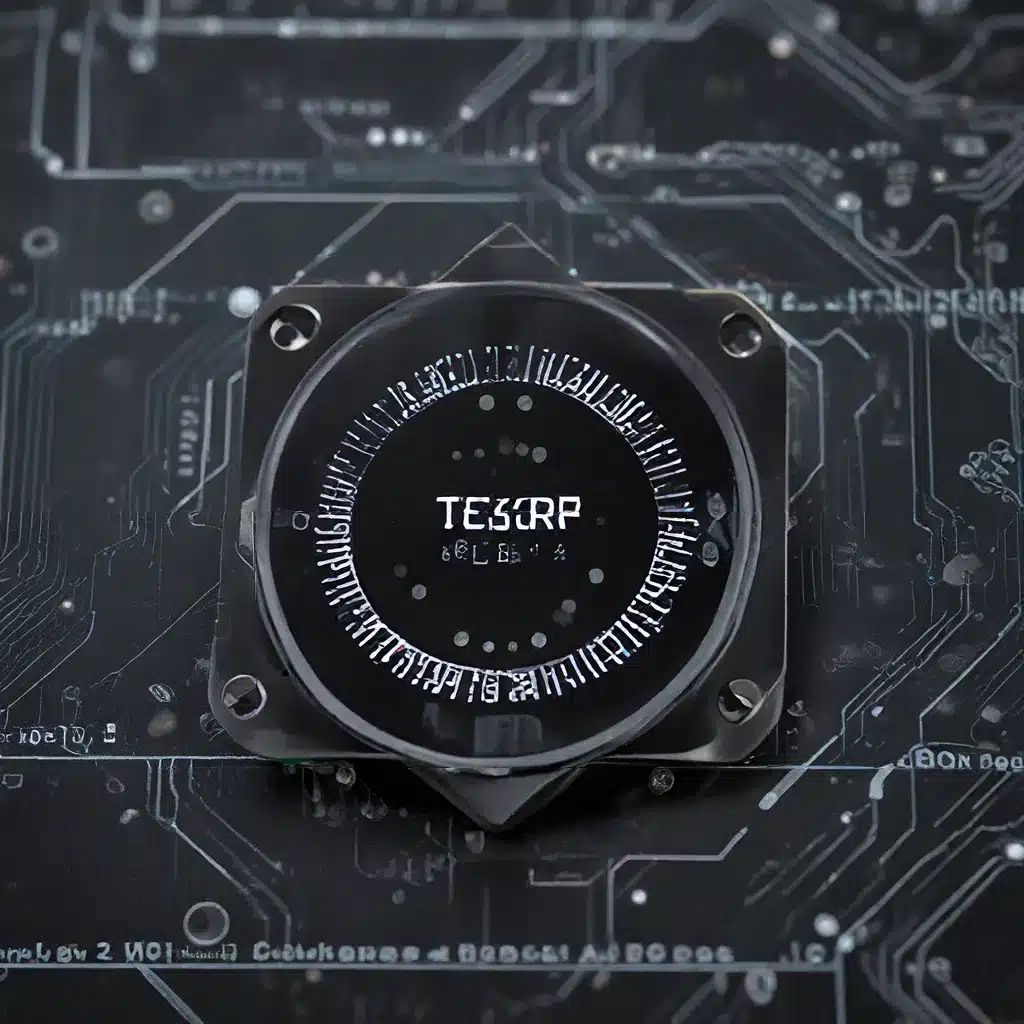
As the Internet of Things (IoT) continues to revolutionize how we interact with the world around us, the role of sensor networks has become increasingly crucial. These networks of interconnected sensors collect and transmit vast amounts of data, enabling smart and adaptive systems that can respond to changes in their environment. However, maintaining the accuracy and reliability of these sensor networks in dynamic real-world scenarios presents a significant challenge.
The Importance of Sensor Calibration in IoT
Sensor calibration is the process of adjusting a sensor’s output to match a known, standard input. This is essential for ensuring that the data collected by sensor networks is precise and consistent, allowing for accurate decision-making and optimization of IoT applications. Improperly calibrated sensors can lead to erroneous or misleading information, which can have serious consequences in critical systems such as healthcare, transportation, or industrial automation.
In the context of IoT, sensor networks often operate in dynamic and unpredictable environments, where factors such as temperature, humidity, pressure, or physical stress can cause sensor performance to drift over time. This drift can lead to inaccuracies and inconsistencies in the data, undermining the reliability and effectiveness of the entire IoT system.
Challenges in Sensor Calibration for Dynamic IoT
Maintaining accurate sensor calibration in dynamic IoT environments presents several challenges:
-
Environmental Factors: Changes in temperature, humidity, pressure, and other environmental conditions can affect sensor performance, requiring continuous or periodic recalibration to maintain accuracy.
-
Mechanical Stress: Sensors deployed in wearable, mobile, or embedded applications may experience physical stress due to bending, twisting, or compression, leading to drift in sensor output.
-
Sensor Aging: Over time, the physical and chemical properties of sensors can degrade, causing their performance to change and necessitating recalibration.
-
Sensor Variability: Even identical sensors can exhibit variability in their baseline and sensitivity, requiring individual calibration to ensure consistent performance.
-
Scalability: In large-scale IoT deployments with thousands or millions of sensors, the time and resources required for manual calibration can become prohibitive, necessitating automated and adaptive calibration solutions.
Adaptive Sensor Calibration Techniques for Dynamic IoT
To address these challenges, researchers and IoT practitioners have developed adaptive sensor calibration techniques that can dynamically adjust sensor parameters to maintain accuracy and reliability in changing environments. Some of these techniques include:
-
Machine Learning-Based Calibration: Machine learning algorithms can be used to model the relationship between sensor outputs and environmental factors, allowing real-time calibration adjustments based on contextual data.
-
Sensor Fusion: By combining data from multiple sensors, sensor fusion techniques can cross-validate and compensate for individual sensor inaccuracies, enhancing the overall reliability of the sensor network.
-
Self-Calibration: Some smart sensors are equipped with built-in calibration capabilities, allowing them to autonomously adjust their parameters based on internal or external reference signals, without the need for manual intervention.
-
Adaptive Filtering: Signal processing algorithms, such as Kalman filters or adaptive filters, can be used to smooth and correct sensor data, reducing the impact of noise and drift on the overall accuracy of the system.
-
Distributed Calibration: In large-scale IoT deployments, distributed calibration approaches can coordinate the calibration of individual sensors, leveraging peer-to-peer communication and consensus-based algorithms to maintain consistent and scalable calibration across the network.
Practical Applications of Adaptive Sensor Calibration in Dynamic IoT
The adaptive sensor calibration techniques described above have a wide range of practical applications in dynamic IoT environments, including:
-
Wearable Health Monitoring: Sensors embedded in wearable devices, such as smartwatches or fitness trackers, can dynamically calibrate to account for changes in skin conditions, body movements, and environmental factors, ensuring accurate and reliable health data collection.
-
Industrial Automation: In smart factories and industrial IoT applications, adaptive sensor calibration can help maintain the precision of machinery and equipment, even in the face of changing environmental conditions or mechanical stresses.
-
Structural Health Monitoring: Sensor networks deployed in civil infrastructure, such as bridges, buildings, or dams, can self-calibrate to account for temperature variations, material aging, or structural deformations, providing real-time structural integrity assessment.
-
Autonomous Vehicles: Self-driving cars and autonomous drones rely on sensor networks to perceive their environment and navigate safely. Adaptive calibration techniques can help these systems maintain accurate sensing capabilities even in dynamic outdoor conditions, such as changing weather or terrain.
-
Smart Agriculture: In precision agriculture applications, IoT sensors are used to monitor soil conditions, plant health, and environmental factors. Adaptive calibration can ensure reliable data collection and optimize resource management, even in the face of seasonal changes or unpredictable weather patterns.
By embracing adaptive sensor calibration techniques, IoT stakeholders can enhance the reliability, accuracy, and longevity of their sensor networks, unlocking the full potential of dynamic, intelligent, and responsive IoT systems that can adapt to changing environmental conditions and user requirements.
Conclusion
As the IoT landscape continues to evolve, the importance of sensor calibration in maintaining accurate and reliable data collection cannot be overstated. By incorporating adaptive calibration techniques, IoT developers and practitioners can ensure that their sensor networks remain resilient and responsive to the dynamic conditions of the real world, ultimately delivering on the promise of smart, connected, and optimized IoT applications across a wide range of industries.
To stay up-to-date with the latest advancements in sensor networks and IoT, be sure to visit the sensor-networks.org website, where you can find a wealth of expert analysis, case studies, and thought-provoking discussions on these transformative technologies.